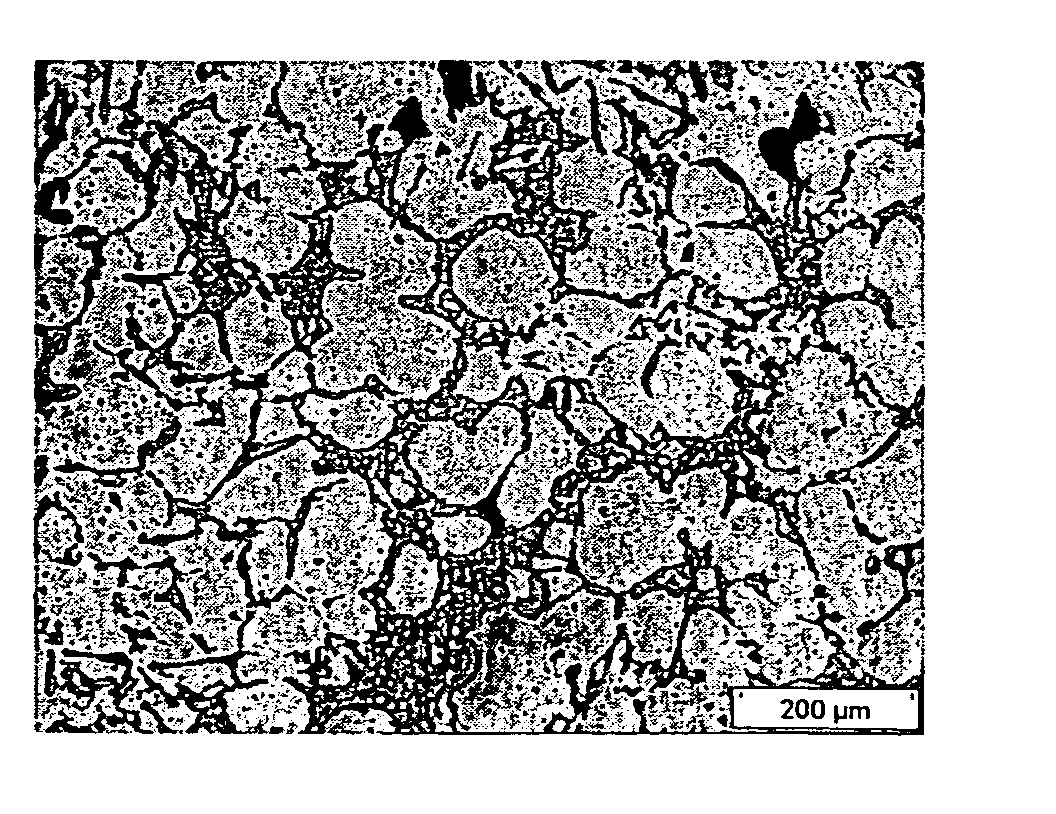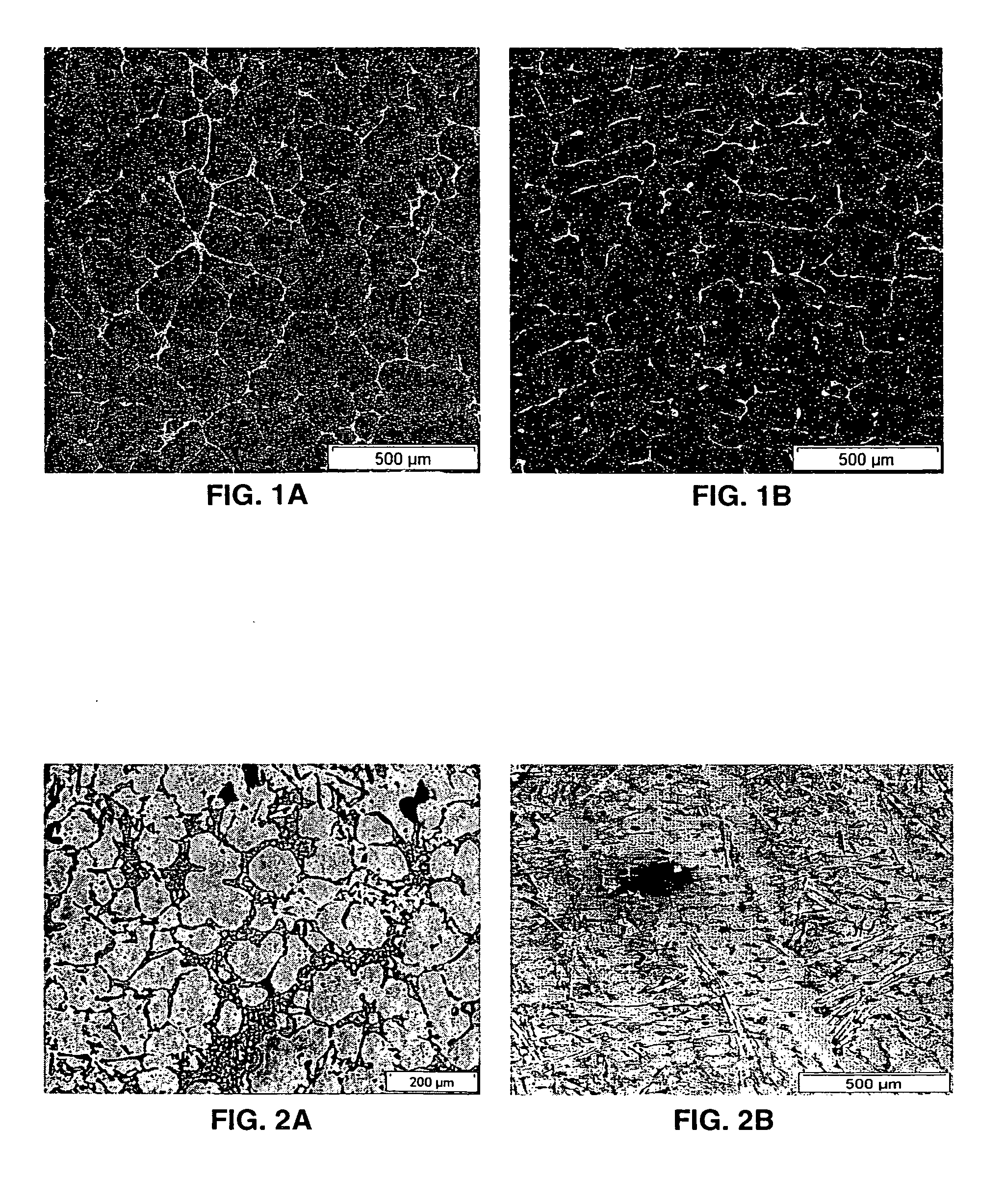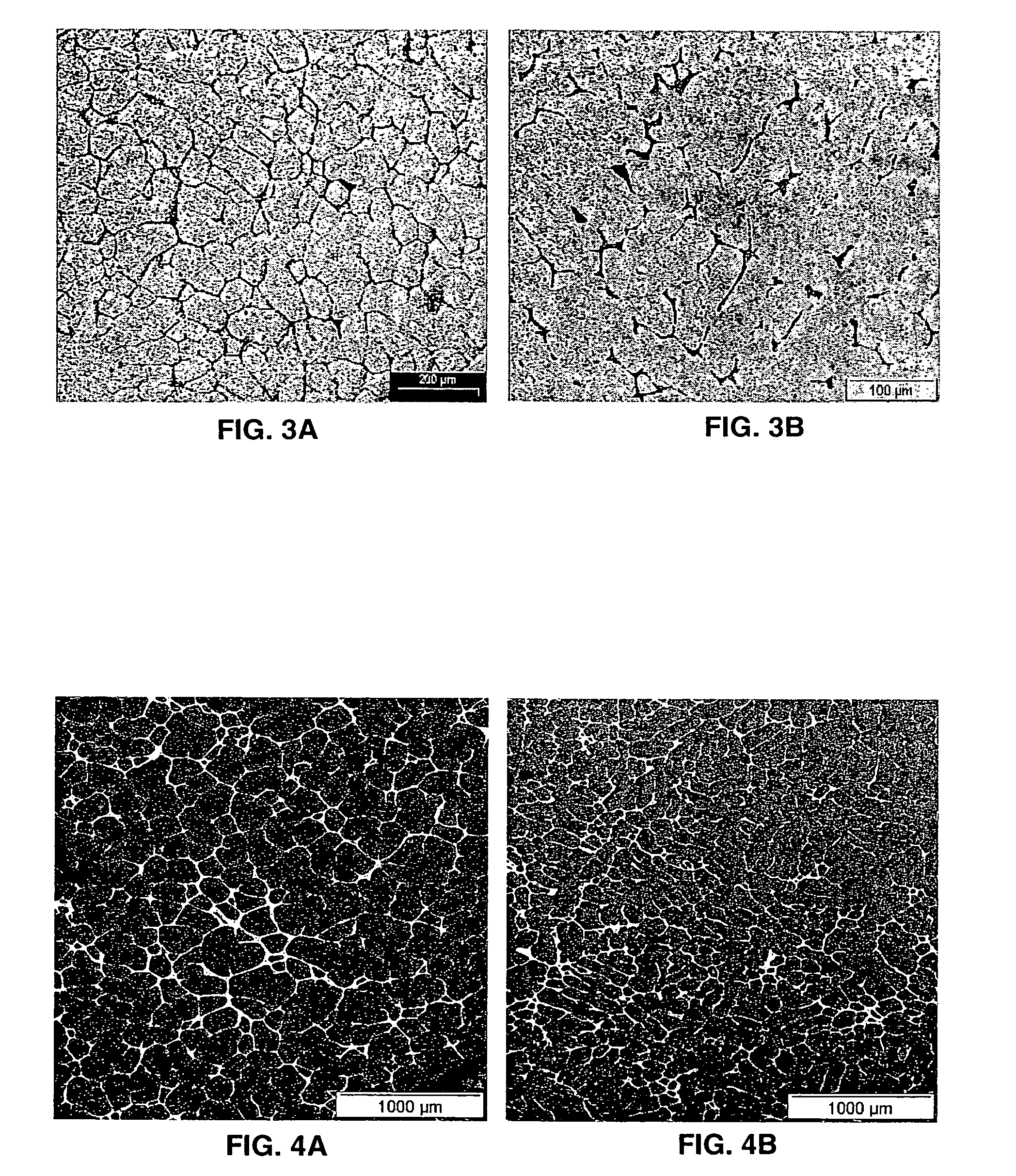Casting of aluminum based wrought alloys and aluminum based casting alloys
- Summary
- Abstract
- Description
- Claims
- Application Information
AI Technical Summary
Benefits of technology
Problems solved by technology
Method used
Image
Examples
example 1
[0034] A method of the present invention is used to produce a cast component with the composition of standard 2014 alloy; namely, aluminum, 3.9-5.0 weight percentage copper, 0.2-0.8 weight percentage magnesium, and 0.4-1.2 weight percentage manganese. Accordingly, 0.86 pounds of commercially pure aluminum is melted in a ceramic crucible and held at 665±5° C. Similarly, 0.14 pounds of a second alloy with the composition aluminum+33 weight percentage copper is melted in a second ceramic crucible and held at 551±5° C. The two alloys are mixed and the resultant alloy is immediately cast in a preheated metal mold. The chemistry of the resultant solidified alloy was measured using spark emission spectroscopy and the microstructure of polished metallographic samples taken from the solidified alloy was examined using optical and scanning electron microscopy. These characteristics of the resultant alloy are compared to the corresponding characteristics of standard 2014 aluminum alloy.
[0035]...
example 2
[0037] A method of the present invention is used to produce a cast component with the composition of standard 4145 alloy; namely, aluminum, 9.3-10.7 weight percentage silicon, 3.3-4.7 weight percentage copper, and 0.8 weight percentage maximum iron. Accordingly, 0.85 pounds of a first alloy with the composition aluminum, 12.7 weight percentage silicon, and 0.024 weight percentage strontium are melted in a ceramic crucible and held at 583±5° C. Similarly, 0.15 pounds of a second alloy with the composition aluminum and 33 weight percentage copper are melted in a ceramic crucible and held at 551±5° C. The two alloys are mixed and the resultant alloy is immediately cast in a preheated metal mold. The chemistry of the resultant solidified alloy was measured using spark emission spectroscopy and the microstructure of polished metallographic samples taken from the solidified alloy was examined using optical and scanning electron microscopy. These characteristics of the resultant alloy are ...
example 3
[0040] A method of the present invention is used to produce a cast component with the composition of standard 5056 alloy; namely, aluminum, 4.5-5.6 weight percentage magnesium and 0.05-0.2 weight percentage manganese. Accordingly, 0.14 pounds of a first alloy with the composition aluminum and 35 weight percentage magnesium are melted in a ceramic crucible and held at 455±5° C. Similarly, 0.86 pounds of commercially pure aluminum are melted in a ceramic crucible and held at 665±5° C. The two alloys are mixed and the resultant alloy is immediately cast in a preheated metal mold. The chemistry of the resultant solidified alloy was measured using spark emission spectroscopy and the microstructure of polished metallographic samples taken from the solidified alloy was examined using optical and scanning electron microscopy. These characteristics of the resultant alloy are compared to the corresponding characteristics of standard 5056 aluminum alloy.
[0041] The measured chemistry of the al...
PUM
| Property | Measurement | Unit |
|---|---|---|
| Temperature | aaaaa | aaaaa |
| Temperature | aaaaa | aaaaa |
| Temperature | aaaaa | aaaaa |
Abstract
Description
Claims
Application Information
 Login to View More
Login to View More - R&D
- Intellectual Property
- Life Sciences
- Materials
- Tech Scout
- Unparalleled Data Quality
- Higher Quality Content
- 60% Fewer Hallucinations
Browse by: Latest US Patents, China's latest patents, Technical Efficacy Thesaurus, Application Domain, Technology Topic, Popular Technical Reports.
© 2025 PatSnap. All rights reserved.Legal|Privacy policy|Modern Slavery Act Transparency Statement|Sitemap|About US| Contact US: help@patsnap.com



